Sample information |
|
| Picture |
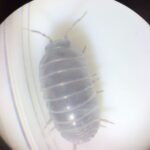
|
|---|---|
| Location | |
| Collection date | 05/12/2024 |
| Captive / Cultivated? | Wild-caught |
| Group | California Academy of Mathematics and Science |
| Observations | About 4mm x 3.25mm x 2.75mm, black/grey, 14 legs, has minimal spots on lower half of exoskeleton |
| Putative identification | Arthropoda |
Methods |
|
| Extraction kit | DNeasy (Qiagen) blood and tissue kit |
| DNA extraction location | Gonads dissected |
| Single or Duplex PCR | Single Reaction |
| Gel electrophoresis system | Standard electrophoresis system |
| Buffer | TAE |
| DNA stain | UView |
| Gel images |
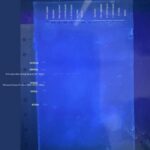
|
| Protocol notes | Run gel at 125V for 30 minutes using DNA control ladder with UView. |
Results |
|
| Wolbachia presence | No |
| Confidence level | High |
| Explanation of confidence level | We observed that all four of our controls worked as expected. The (+) Arthropod control and (+) DNA control had both the Arthropod CO1 and Wolbachia-specific 16S rRNA genes in our Arthropod PCR side, the (-) Arthropod control had only the CO1 band and no Wolbachia band in the Arthropod PCR side, and our (-) water controls had no bands or smudges. This means that the genes were successfully extracted and amplified during extraction and PCR. On the Wolbachia PCR side, we observed only the Wolbachia-specific 16S rRNA bands under the (+) Arthropod and (+) DNA lanes as expected, meaning that the Wolbachia was successfully extracted and amplified our DNA during extraction and PCR with no contamination. Our DNA ladder bands were clearly present and separated, and our CO1 and 16S rRNA bands showed up in the expected locations, at 708bp and 438bp respectively. Due to these successes, we can conclude from our sample lanes containing our spotted and non-spotted pillbugs, that they both are not infected with Wolbachia. There is clearly only bands for Arthropod CO1 but no bands for the Wolbachia-Specific 16S rRNA. |
| Wolbachia 16S sequence | |
| Arthropod COI sequence |
|
| Summary | The Arthropoda was found to be negative for Wolbachia. |
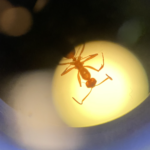 Formica Pallidefulva
Formica Pallidefulva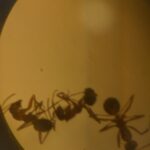 Formica Pallidefulva
Formica Pallidefulva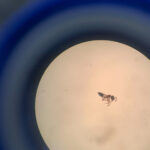 Ant
Ant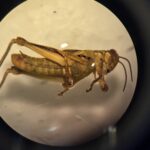 Differential Grasshopper – Melanoplus differentialis
Differential Grasshopper – Melanoplus differentialis Pill Bug (Armadillidium vulgare) – Draft
Pill Bug (Armadillidium vulgare) – Draft